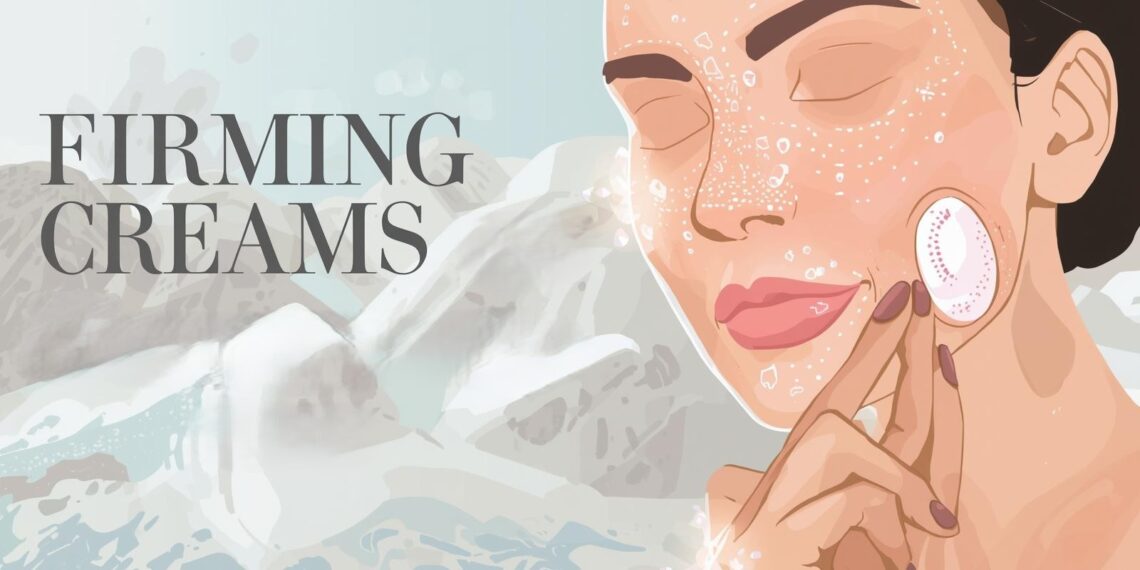In a world where the pursuit of youthful, firm skin is nearly ubiquitous, firming creams have become a staple in many individuals’ skincare regimens. But the burning question remains: do they really work? To unravel this mystery, we must delve into the science behind these creams, examine consumer behavior, and explore the broader implications of their popularity in the wellness industry.
Firming creams, often marketed as anti-aging solutions, are topical products designed to tighten and tone the skin. They are typically enriched with active ingredients like retinoids, peptides, collagen, and antioxidants, each promising to enhance skin elasticity and reduce the appearance of sagging.
The efficacy of firming creams largely depends on their ingredients. Retinoids, derivatives of Vitamin A, are renowned for their ability to boost collagen production and accelerate skin cell turnover. Peptides, short chains of amino acids, serve as the building blocks of proteins like collagen and elastin, crucial for maintaining skin’s firmness. Additionally, antioxidants combat free radicals, thereby preventing further skin damage and promoting a youthful appearance.
The allure of firming creams lies in their promise of a non-invasive, convenient solution to skin aging—a concern that transcends cultures and demographics. As wellness increasingly intertwines with beauty, these creams cater to consumers seeking holistic approaches to self-care. Moreover, the rise of social media and its emphasis on visual aesthetics has amplified the demand for products that promise a flawless appearance.
While many consumers report satisfaction with firming creams, it’s essential to manage expectations. These products may not deliver drastic transformations but can offer subtle improvements when used consistently. The perception of efficacy is often influenced by marketing narratives and personal beliefs about aging and beauty.
Firming creams exemplify the broader wellness trend of merging beauty with health. As consumers become more informed and discerning, they seek products that align with their values—be it sustainability, transparency, or efficacy. This shift presents both challenges and opportunities for product developers aiming to innovate in the crowded skincare market.
For wellness product developers, the key lies in understanding consumer desires while staying ahead of industry trends. This involves not only formulating effective products but also crafting compelling narratives that resonate with contemporary lifestyle trends. The incorporation of clean, ethically sourced ingredients and transparent labeling can further enhance consumer trust and brand loyalty.

Lifestyle magazine editors play a crucial role in shaping public perceptions of wellness trends. By providing insightful, data-driven content that explores the intersections between firming creams, identity, and social practices, editors can engage readers and keep content relevant. Highlighting real-world applications and consumer testimonials can offer a balanced view of the product’s impact.
For health and wellness coaches, understanding the broader cultural and economic phenomena influencing client behaviors can inform more effective coaching strategies. By acknowledging the role of firming creams within the context of self-care and identity, coaches can tailor their guidance to meet clients’ evolving needs and preferences.
The popularity of firming creams reflects deeper societal and cultural dynamics, such as the quest for youth and the valorization of appearance. In many cultures, firm skin is synonymous with vitality and success, driving the demand for products that promise these attributes. This phenomenon underscores the broader wellness industry’s influence on personal well-being and social identity.
As the wellness industry continues to evolve, the future of firming creams will likely be shaped by technological advancements and shifting consumer priorities. Innovations such as personalized skincare solutions, driven by AI and biotechnology, could redefine efficacy standards and further blur the lines between beauty and wellness.
Firming creams occupy a unique niche in the wellness landscape, balancing scientific promise with consumer expectations. While their effectiveness may vary, their popularity highlights the enduring appeal of products that promise youthful vitality. As the wellness industry progresses, firming creams will undoubtedly continue to evolve, reflecting the dynamic interplay between science, consumer behavior, and cultural trends.
In navigating this complex terrain, stakeholders—from product developers to magazine editors—must remain attuned to the shifting dynamics of wellness. By doing so, they can better serve their audiences and contribute to the ongoing dialogue about the intersection of wellness, identity, and social practices.




